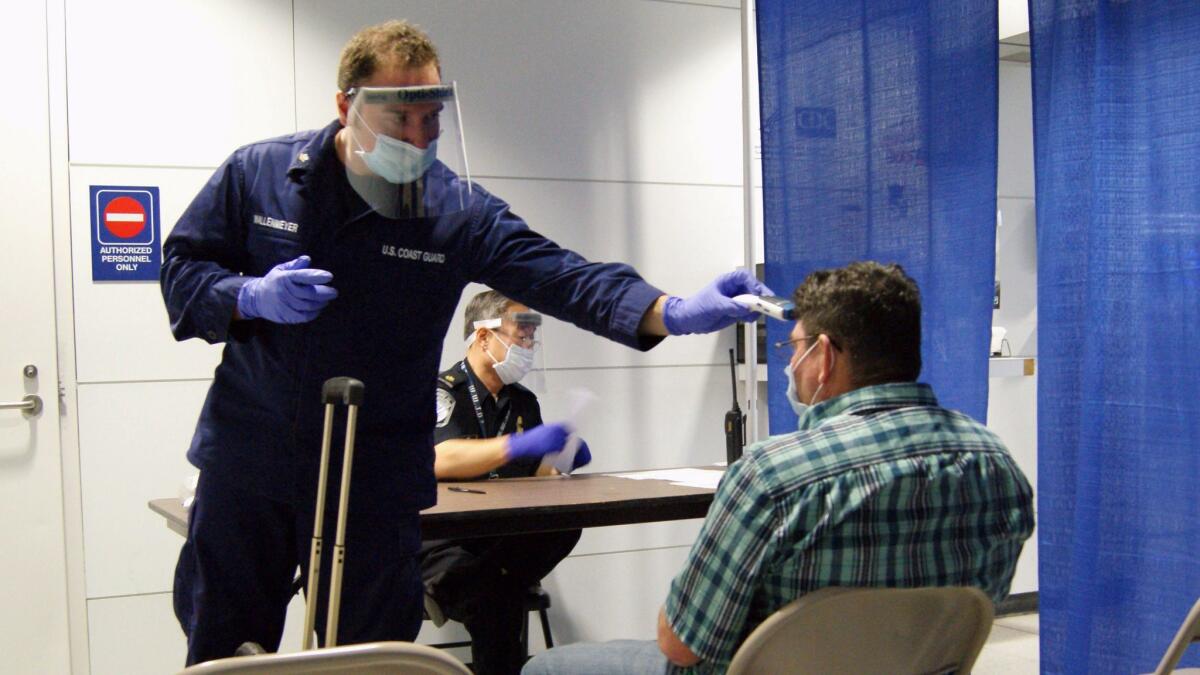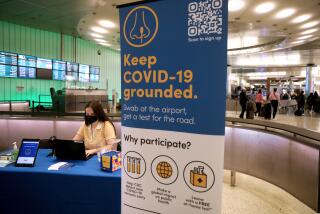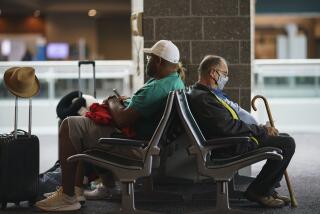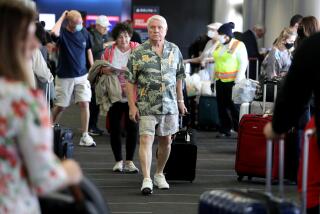Common airline boarding practice makes spread of disease more likely, study says

The common practice of boarding airline passengers by classes is the worst way to avoid spreading infectious diseases, according to a study from Arizona State University.
The study by a team that included experts in human evolution, biomedical informatics and applied math found that infection rates increased when passengers were crowded together — as they often are while trying to board a plane.
In the case of an Ebola outbreak, the study said that the current boarding practice used by most airlines would lead to a 67% chance of 20 air-travel-related cases a month.
Furthermore, the study found that bigger planes with more passengers can also lead to higher infection rates. In the past decade, the airline industry has tried to increase efficiency and profits by packing more passengers in larger planes
“Using smaller airplanes during an outbreak, instead of completely banning flights to a specific destination, can drastically reduce the probability of introduction of infection,” said Anuj Mubayi, an assistant professor at ASU’s School of Human Evolution and Social Change who worked on the study.
The study recommends a few fixes to reduce the infection rate, such as dividing the plane into two lengthwise sections and loading passengers randomly to cut down on bottlenecks.
To read more about the travel and tourism industries, follow @hugomartin on Twitter.
More to Read
Inside the business of entertainment
The Wide Shot brings you news, analysis and insights on everything from streaming wars to production — and what it all means for the future.
You may occasionally receive promotional content from the Los Angeles Times.











